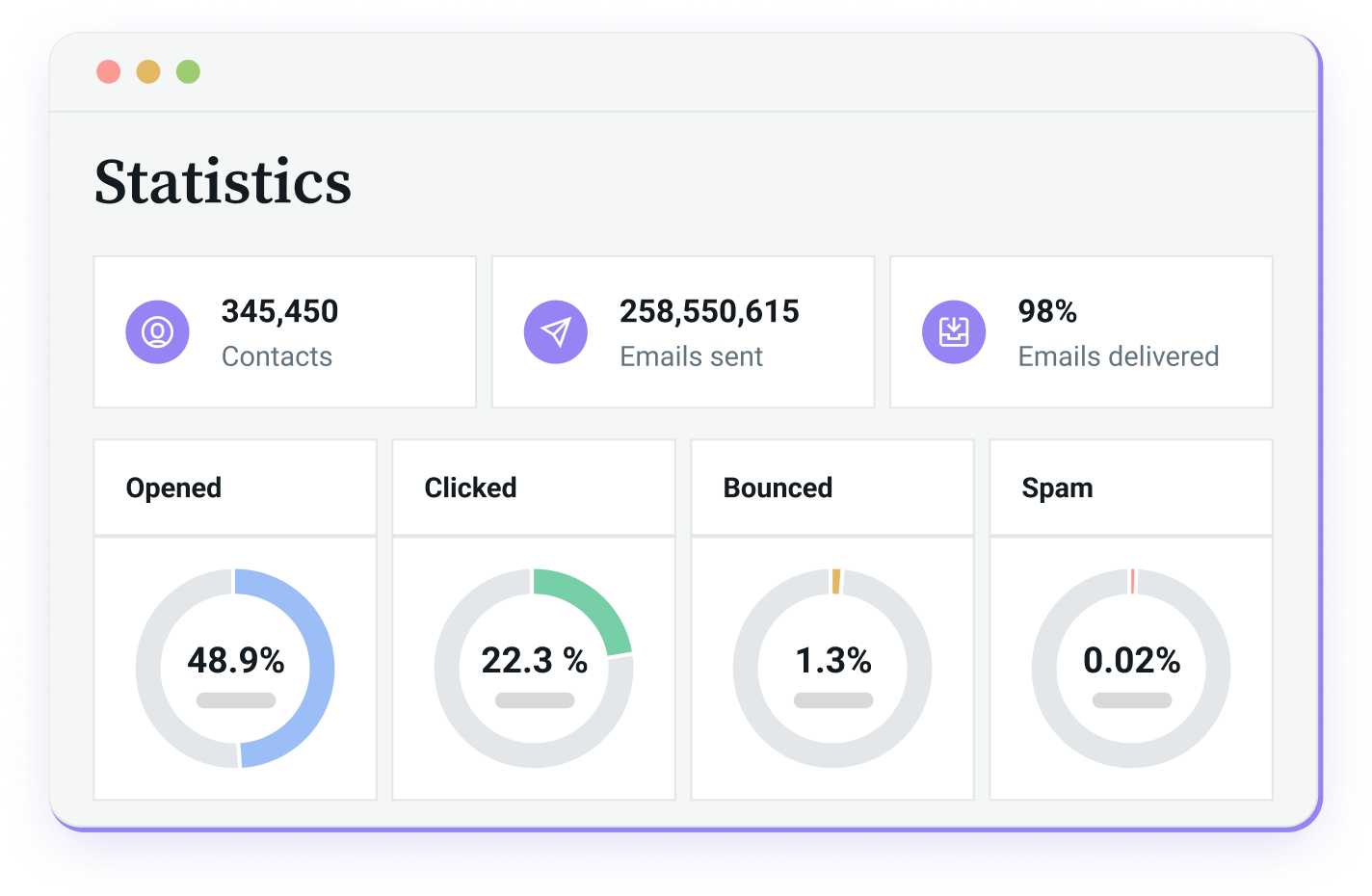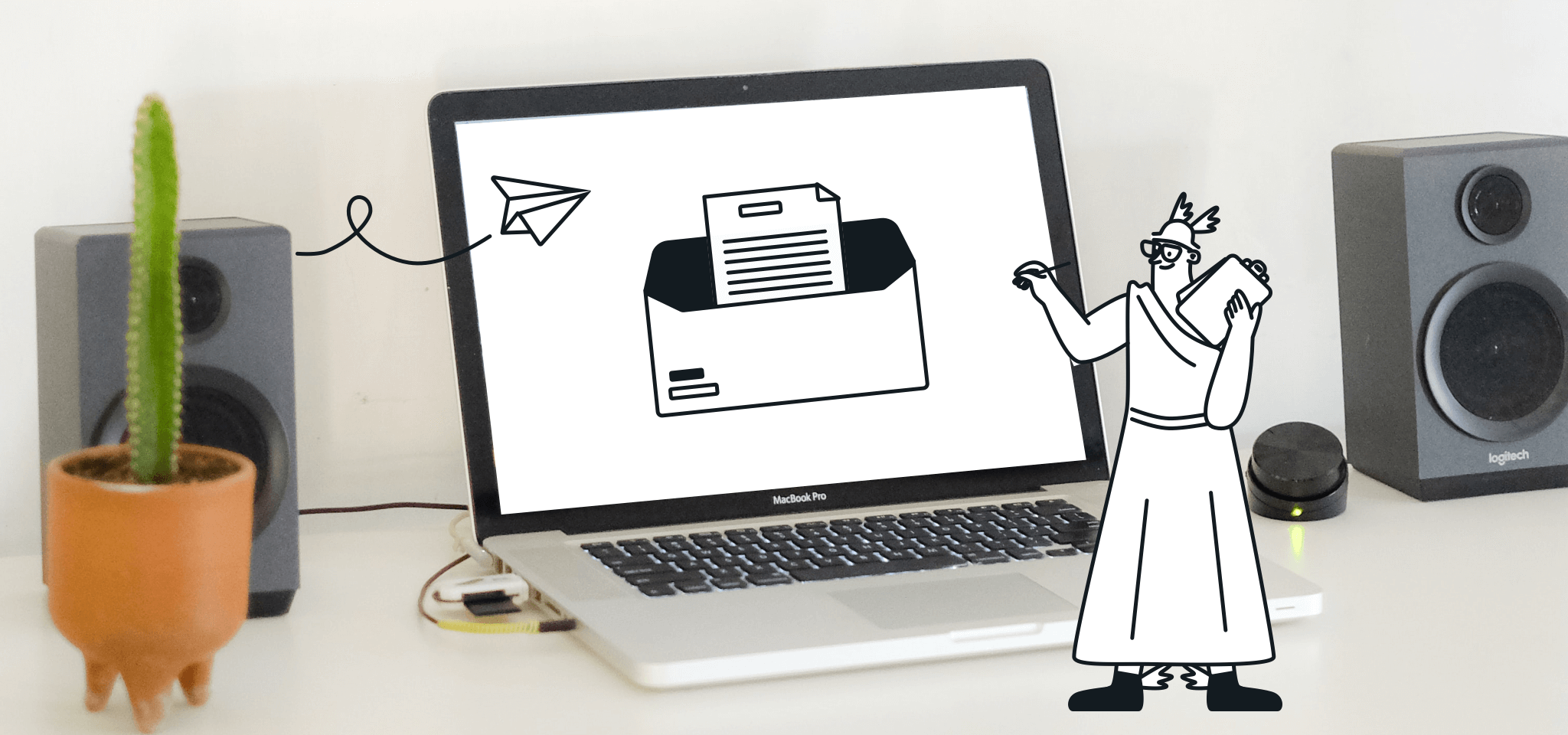Email best practices
What is an SMTP relay and why do we use it?
All the information you ever needed on SMTP relay. Find out more about what an SMTP relay is and why it’s an efficient solution for your email sending needs.

PUBLISHED ON
Emailing is hard. It might look easy at first – just write something smart, press 'Send' and wait, right? But mastering the channel’s ins and outs is not that simple. The world of email is full of complicated words like email deliverability or relay servers, confusing acronyms such as SMTP, MTA, or IMAP, and detailed metrics that need to be understood.
Setting up contact lists and creating your first newsletter are great starting points, but if you’re looking to take the next step in your understanding of email marketing, then you should take a closer look at SMTP relays.
SMTP stands for Simple Mail Transfer Protocol and is the backend system that helps you and your company send, receive, and relay messages between email senders and receivers. Let’s look at what an SMTP relay is and how it works.
Table of content
Widespread usage
Email campaign performance
Email bounce monitoring
SMTP authentication and security
Behind the scenes: SMTP server tracking
What is an SMTP relay?
An SMTP relay is a protocol that allows email to be transmitted through the internet, from one SMTP server (commonly referred to as a “smart host”) to another. It was first created in 1982 and continues to be the internet standard widely used today.
An SMTP relay is an email relay service that works in two steps:
It receives the outgoing email from the sender’s SMTP server (that is, your amazing email campaign).
It delivers it to the recipient’s SMTP server.
Simple enough, right? To make things even clearer it might help to define some of the commons terms you’re likely to hear around SMTP relays:
SMTP terminology | Definition |
|---|---|
SMTP terminology | |
SMTP | SMTP, or Simple Mail Transfer Protocol, is the language email servers use to send and receive messages. Think of it as the postal system for the digital world, ensuring smooth delivery of your electronic letters. |
Definition | |
Open relay | An open relay is a mail server that allows anyone on the internet to send email through it, regardless of whether they are authorized users or not. This was once a common configuration, but it is now considered a security risk as it can be easily exploited by spammers and malware distributors. |
SMTP server | An SMTP server acts like the post office for email, sending your messages to their destinations on the internet. Think of it as the digital mail truck that picks up your email and delivers it to the recipient's mailbox. |
SMTP relay service | With an SMTP relay service, you're tapping into a specialized service provider that handles all the heavy lifting for you. They've got the infrastructure, the expertise, and the experience to ensure your emails reach their destination reliably and securely. It's like having a team of professional mail carriers at your beck and call. |
Smart host | Smart host and SMTP relay are used interchangeably. However, the primary difference is security: smart hosts require SMTP authentication (SMTP-auth) to relay emails, whereas SMTP relay does not. |
How does the SMTP relay protocol work?
To better understand how an SMTP relay works, let’s imagine the journey that your normal snail mail may take to get to its destination:

Email relay is the process of transmitting an email message from one server to another. In the picture above, the local post offices would be the SMTP servers and the email transfer that happens between them is what we call ‘relaying’.
So, for example, when you send out your latest campaign “Cute puppies looking for a foster home”, your company’s SMTP server relays your email to the recipient’s server.
But if you were to send that campaign to someone within your organization’s domain, there would be no ‘email relay,’ as your domain’s SMTP server wouldn’t need to transfer the email to a different SMTP server.
Why is SMTP relay important?
Despite all this talk of SMTP relays and servers, the question remains. How does the SMTP relay process impact my email marketing efforts?
Well, as an email marketer, understanding the SMTP relaying process and its role in bulk emailing is important for several reasons:
Widespread usage
SMTP is one of the most widely adopted protocols for email transmission (along with email APIs). Many senders use it to send and receive emails.
This makes SMTP crucial for ensuring your marketing emails reach their intended audience across various email providers, regardless of their location.
Email campaign performance
SMTP protocol allows email delivery and tracking platforms, such as Mailjet, to more accurately analyze the performance of email campaigns.
Monitoring SMTP response codes can provide insights into the success of your email deliveries, including delivery rates and open and click rates, and identify potential issues that need addressing.

Email bounce monitoring
When an email cannot be delivered to the recipient's inbox for various reasons (an email address doesn't exist, the mailbox is full, etc.), the receiving server sends a bounce notification back to the sender.
The SMTP protocol helps email delivery and tracking platforms manage these email bounce messages, allowing you to clean and maintain your email lists to improve deliverability and sender reputation.
SMTP authentication and security
SMTP authentication mechanisms, such as SMTP AUTH, enable you to add basic email authentication protocols such as SPF and DKIM. These help guard your campaigns from email spoofing, spam, and phishing attacks.
Additionally, SMTP uses TLS (Transport Layer Security) - the successor to SSL (Secure Socket Layer) – to encrypt communication between email servers, further enhancing the security of your email communications.
Sending through an SMTP server with an email service provider
So, what does this protocol look like when it comes to an email service provider like Mailjet? Getting the most out of your own SMTP relay server is not easy, so most businesses that need to send mass email to their customers (email marketing campaigns and transactional emails) use SMTP relay for ease of maintenance and added analytics insights.
Sending through an email service provider via an SMTP relay saves companies from having to run their own mail server. As you can see in the diagram below, the business or sender creates the email, and their server routes it through Mailjet’s SMTP server to prepare and send it out to recipients.

To combat spam, many webmail providers and email clients (i.e., Gmail, Microsoft Outlook, Yahoo, etc.) put a limit on how many emails you can send to different recipients per day. As businesses who need to communicate en mass with their audience would often exceed this limit, they will require the services of an enterprise level email sending platform – like Mailjet.
An SMTP relay provider can help businesses and organizations deliver large volumes of email without getting them mislabeled as spam or running up against small sending limits.
Email service providers (ESP) invest a lot of resources into building their own email infrastructure to handle large volumes and work closely with the major internet service providers (ISP) and webmail providers to improve email deliverability and deliver these emails straight to the recipient's inbox.
Behind the scenes: SMTP server tracking
There’s an added layer of value to sending through an email service provider. With Mailjet, before our SMTP servers send an email, our system automatically adds link trackers to the body of your message. This then allows you, as the user, to properly track opens and clicks after an email has been received.
Mailjet also translates feedback from ISPs (Gmail, Yahoo, AOL, etc.), since each one communicates in its own way. Our service saves developers time by converting this into an easily identifiable response, displaying whether an email has been delivered or has bounced. These metrics make it easier for you to identify issues that might impact your email deliverability.
Want to know if a third-party SMTP relay service is the choice for your company? Learn more in our Email Infrastructure Handbook.
Choosing an SMTP relay port
Aha! Another tricky aspect of the email world. To understand what SMTP ports are and how they work, we need to take a step back and see what happens when computers communicate with each other on the internet.
Let’s say you are trying to reach mailjet.com. In this case, the Domain Name System (DNS) is converting this to the actual IP address that is hidden behind the name of the site. In Mailjet’s case, this is 104.199.110.216. You could remember 4-5 IPs like ours, but who can remember more, or really…who would want to?
An SMTP port is one that is meant to be used for SMTP connections. Today, the most common SMTP ports are 25, 465, 587, or 2525. This doesn’t mean that they are the only ones, though. These few ports are the most used ones for these types of connection, and because of that they are almost always open, which means you should be able to reach your destination.
Choosing the right SMTP relay port to use is an important consideration when it comes to SMTP. So much so that we devoted an entire blog to this already. If you're trying to decide which port to use, be sure to read our article Which SMTP Port Should I Use? to see which one is best for you.
Wrapping up
Ultimately, SMTP relay makes our lives as marketers much simpler by handling all the heavy lifting in the backend so that we can spend more time crafting content and building out our contact lists.
So, if you’d like to improve your email placement, have greater insights in email performance, and get your emails straight into the inbox, take a look at our SMTP Server.
Related readings
Popular posts

Top email marketing trends for 2022
To the outsiders, it can sometimes feel like email hasn't changed that much since it was created. Maybe this is why some are so persistent in...
Read more

Reducing email’s carbon footprint
When it comes to protecting our planet, every step toward cleaner practices – small and big – counts. So, what if we told you that emailing, as clean and green as it seems...
Read more

Marketing calendar 2024: Dates you shouldn’t miss this year
We finally got through 2023 (phew!) and Q1 is just around the corner. It’s time for you to start scribbling down your New Year’s Resolutions to make sure we start the year with a bang. If you’ve found your way here, we’re guessing that’s because creating a winning...
Read more



